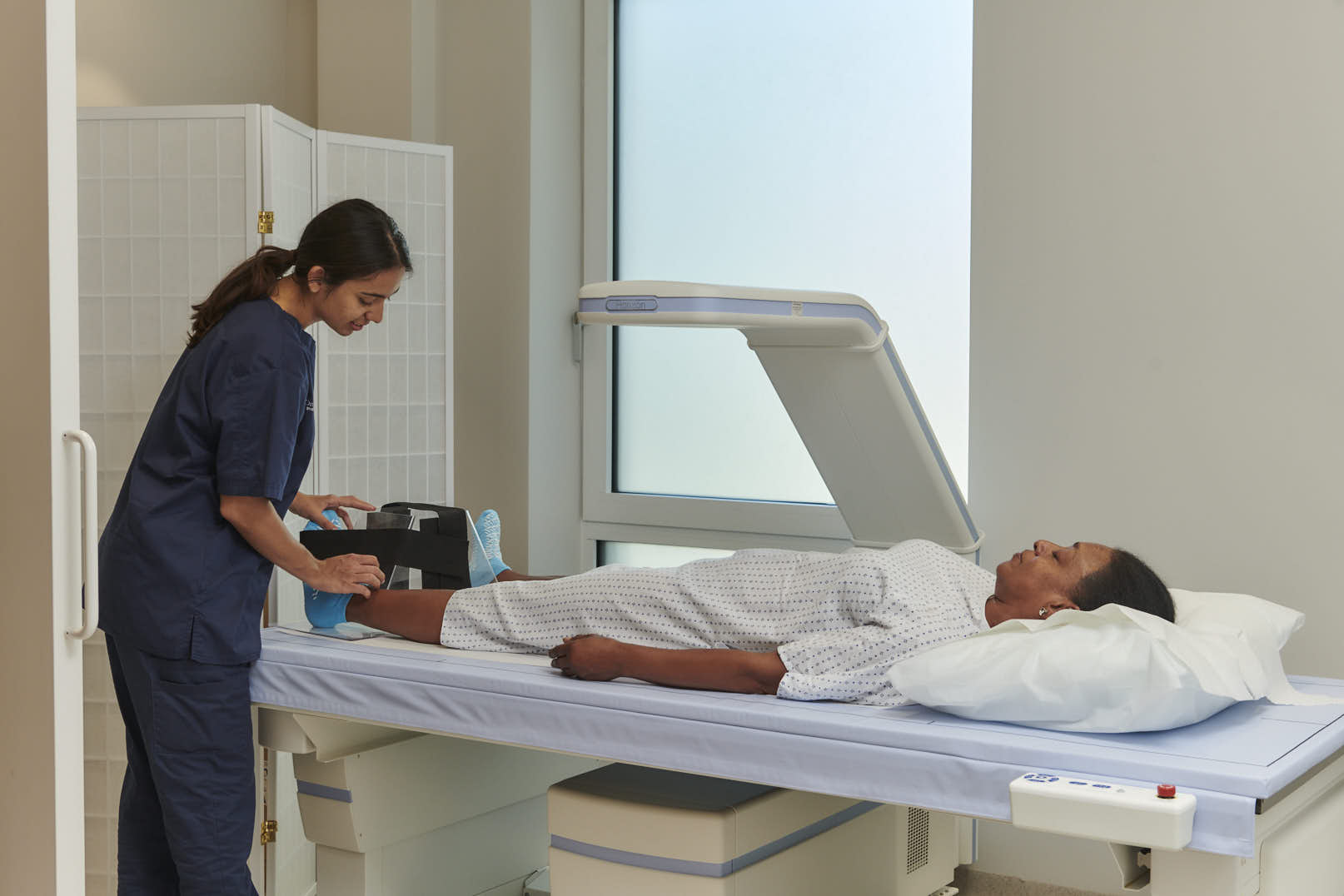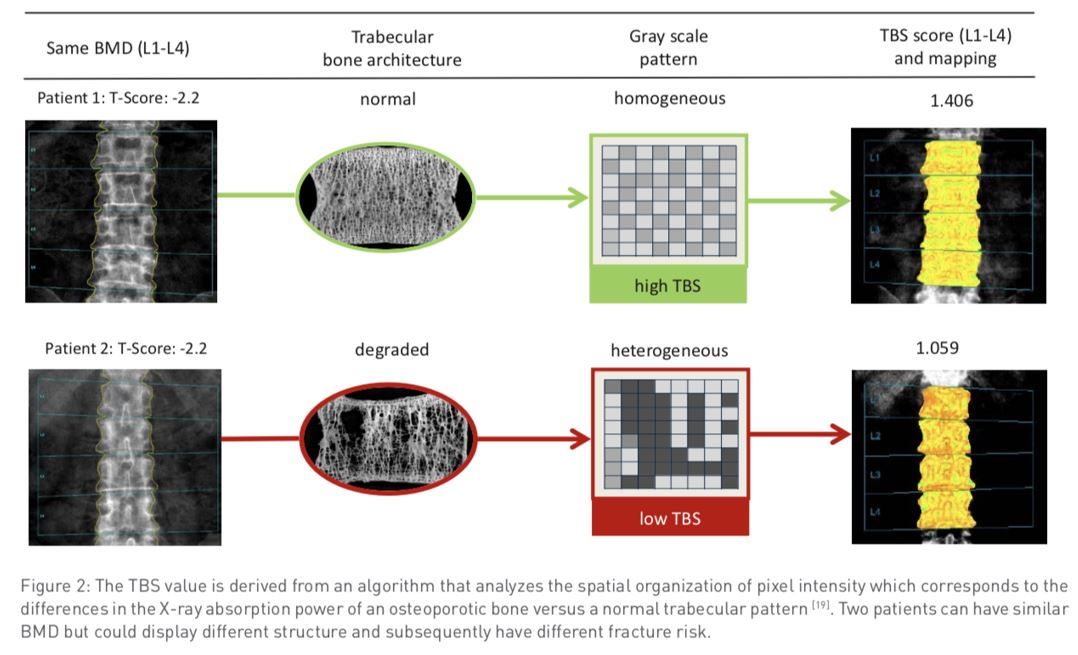
Dr Julian Waung
Specialist expertise: Type 1 & 2 Diabetes, Thyroid Disorders, Endocrine Disorders, Endocrinology, Bone Disorders, Fertility, Hypoparathyroidism.
Dr Julian Waung, Consultant Endocrinologist at OneWelbeck, evaluates and explains Trabecular Bone Score and how it helps patients at risk from fractures.

Dual-Energy X-ray Absorptiometry (also known as DEXA or DXA) is a standard, non-invasive, low-ionising radiation tool that is used to measure bone mineral density (BMD) in clinical practice. It allows accurate diagnosis of osteopenia (T score* between -1 and -2.4) and osteoporosis (T score ≤ -2.5) as well as an estimation of fracture risk.
*T score measures your bone density, a T-score of -1.0 or above is normal bone density
Anyone who has sustained a low energy (insufficiency) fracture from a fall (from standing height or less) or has clinical risk factors for osteoporosis may benefit from the DEXA scan, as it assesses their bone mineral density.
Fractures in the back (known as vertebra) are common and only 1 in every 4 are felt (the clinical fractures that come to medical attention) in women. The rest are silent fractures only detected on imaging. The presence of vertebral fractures, whether clinical or silent, will have a major impact on the risk of developing more insufficiency fractures so it is important to detect them early on.
If you find that you have back pain or a loss of height, this could indicate that you need a vertebral fracture assessment.
Historically, x-rays of the spine were used to look for vertebral fractures. The vertebral fracture assessment can be requested as an add-on test using the DEXA scanner at OneWelbeck. The estimated ionising radiation dose* for DEXA VFA is 130 times less than spinal x-rays and only represents up to 0.02% of annual background ionising radiation.
*Ionising radiation is a form of energy that acts by removing electrons from atoms and molecules of materials that include air, water, and living tissue.
A number of fracture risk estimation tools exist but FRAX* is the most commonly used internationally and recommended by the National Osteoporosis Guideline Group (NOGG) in the UK.
Several clinical risk factors are used together with bone mineral density from DEXA to then give a 10-year estimate of the risk of a patient getting major osteoporotic fractures (arm, legs and spine) or a hip fracture. Based on the FRAX score, a decision can be made whether bone protection treatment should be recommended or not.
*FRAX stands for Fracture Risk Assessment Tool, a tool to predict the risk of fractures in a person with osteoporosis within the next 10 years. Find out more about FRAX by clicking this link.
BMD from DEXA tells you the amount of bone but not the quality of that bone. Trabecular Bone Score is a non-invasive method to try to understand the quality of bone in the spine using images acquired on a DEXA scanner. This allows an assessment of trabecular bone microarchitecture (which is how interconnected the spongy bone of the spine is) which has several applications.

Click here to read a white paper on TBS Osteo.
TBS predicts new fractures independently of lumbar spine bone mineral density and clinical risk factors. It can be used as an adjustment factor for FRAX to give a more refined prediction of fracture risk.
The report gives a risk-adjusted T score at key sites (femoral neck, total hip, and spine) and a TBS-adjusted FRAX score. It has been validated for multiple causes of secondary osteoporosis/increased fracture risk including:
TBS can also inform fracture risk when bone mineral density is artificially increased (falsely reassuring) by calcium deposited around the spine in conditions such as:
TBS can also be used for monitoring treatment defects (both contributors to bone loss and bone-building treatment):
Trabecular Bone Scoring is, therefore, an important tool to provide a more accurate assessment of bone health, and fracture risk and most importantly to help provide accurate treatment for osteopenia and osteoporosis.
TBS is not widely available in the UK but is reported as the standard of care for all DEXA scans done at OneWelbeck.
Dr Waung focuses primarily on bone health but also all endocrine problems including sex hormone deficiency fertility, diabetes, thyroid problems and hypoparathyroidism.